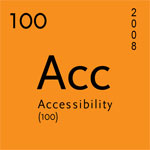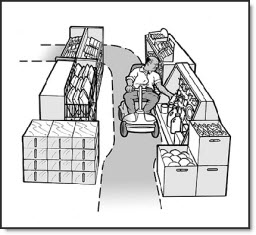How Small Business Can Welcome Customers with Disabilities

According to the U.S. Department of Labour, more than 50 million Americans with disabilities – 18% of population – are potential customers for businesses of all types across the United States. This under tapped market has $175 billion in discretionary spending power. That figure is more than twice the spending power of American teenagers and almost 18 times the spending power of the American “tweens” market. Similarly, the Canadian Standards Association estimates that Canadians with disabilities, with an estimated $25 billion in purchasing power annually, will represent 20-25% of the recreation, retail, entertainment, workplace and housing markets in the coming year.
Which small business wouldn’t want a share of that market?
Ideally, all business locations would meet physical access requirements and regulations by having wide doorways, automatic door openers, ramps and elevators, textured floorings, flashing fire alarms and such. Unfortunately, this is not always the case, particularly for small businesses with limited resources and limited physical control over their leased space. However, there are numerous ways they can welcome and serve customers with disabilities, perhaps even better than their large competitors can.

(Credit: Reaching Out to Customers with Disabilities)
- Where possible, ensure doors, aisles and hallways are at least 36″ or 91.5 cm wide. People using wheelchairs can’t become customers if they are unable to enter your place of business.
- Keep aisles clear from extra displays or products on the floor.
- Be comfortable communicating with customers with disabilities.
- Provide a lower counter (34″ or 86 cm) to serve customers in wheelchairs and customers of short stature. Alternatively, keep a clip board handy at the service counter to provide people in wheelchairs a firm surface for writing cheques and such.
- Adjust the tension of door closure to make it easier for someone in a wheelchair or with minimal arm strength to open a door. The tension need not be more than five pounds.
- If you’re not sure what to do, ask your customer, “May I help you?” Ask before you offer to help, then wait for response. Your customers with disabilities know if they need help and how you can provide it.
- Have various ways customers can contact your business. Not everyone can use the phone; not everyone has email.
- If your location does have a wheelchair washroom, please keep it clean and in good working order. Don’t use it for storage, please!
- Attitude and common sense goes a long way in compensating for a less than accessible location.
- Keep sidewalks, ramps and curb cuts clear of snow, overgrown bushes and other debris.
Remember: “My money believes in equal opportunity. If one business is inaccessible, it is happy being spent elsewhere!”
Questions to consider
- In your business, what are some of the ways that a customer with a disability may need extra assistance?
- Do your employees know they are supposed to provide extra assistance to a customer with a disability when needed, as long as it does not jeopardize the safe operation of your business?
- What are some alternative ways to provide service to a customer with a disability that would be feasible in your setting?
Additional Resources
- Access is Everyone’s Business!: Quick Business Tips
- How to Welcome Customers with Disabilities
- Reaching Out to Customers with Disabilities: An online ADA course for businesses
- Ten Small Business Mistakes (video)
Accessibility 100 is a series of 100 easy-to-implement, free and inexpensive tips for improving accessibility for people with disabilities. This is a community project. Feel free to leave your comments, questions and ideas for future Accessibility 100 posts.
Get the entire series by subscribing to this blog by filling in the form in the upper right corner or by subscribing to the RSS feed.
If you enjoyed this post, consider buying me a chai tea latte. Thanks kindly.
 Subscribe via RSS
Subscribe via RSS



